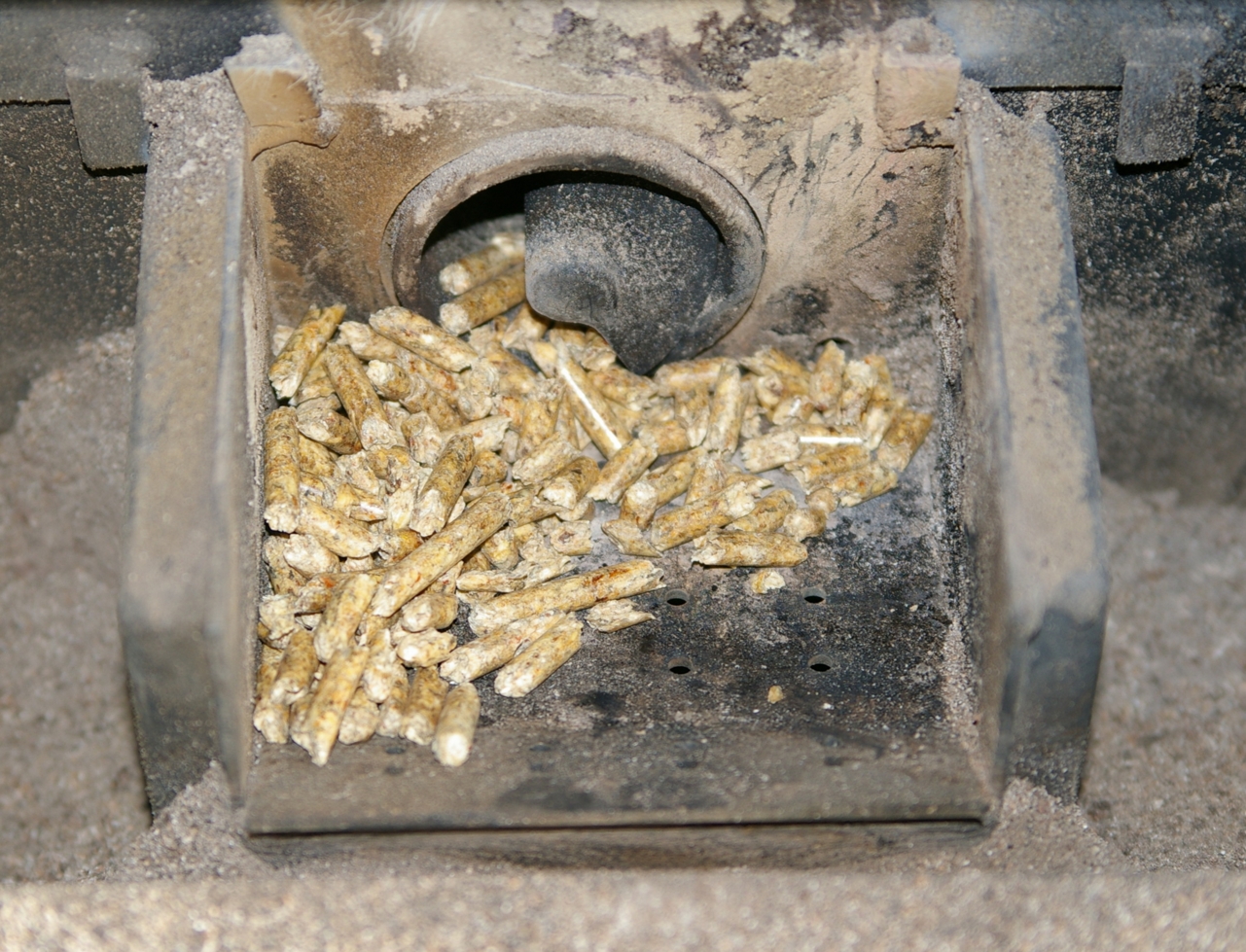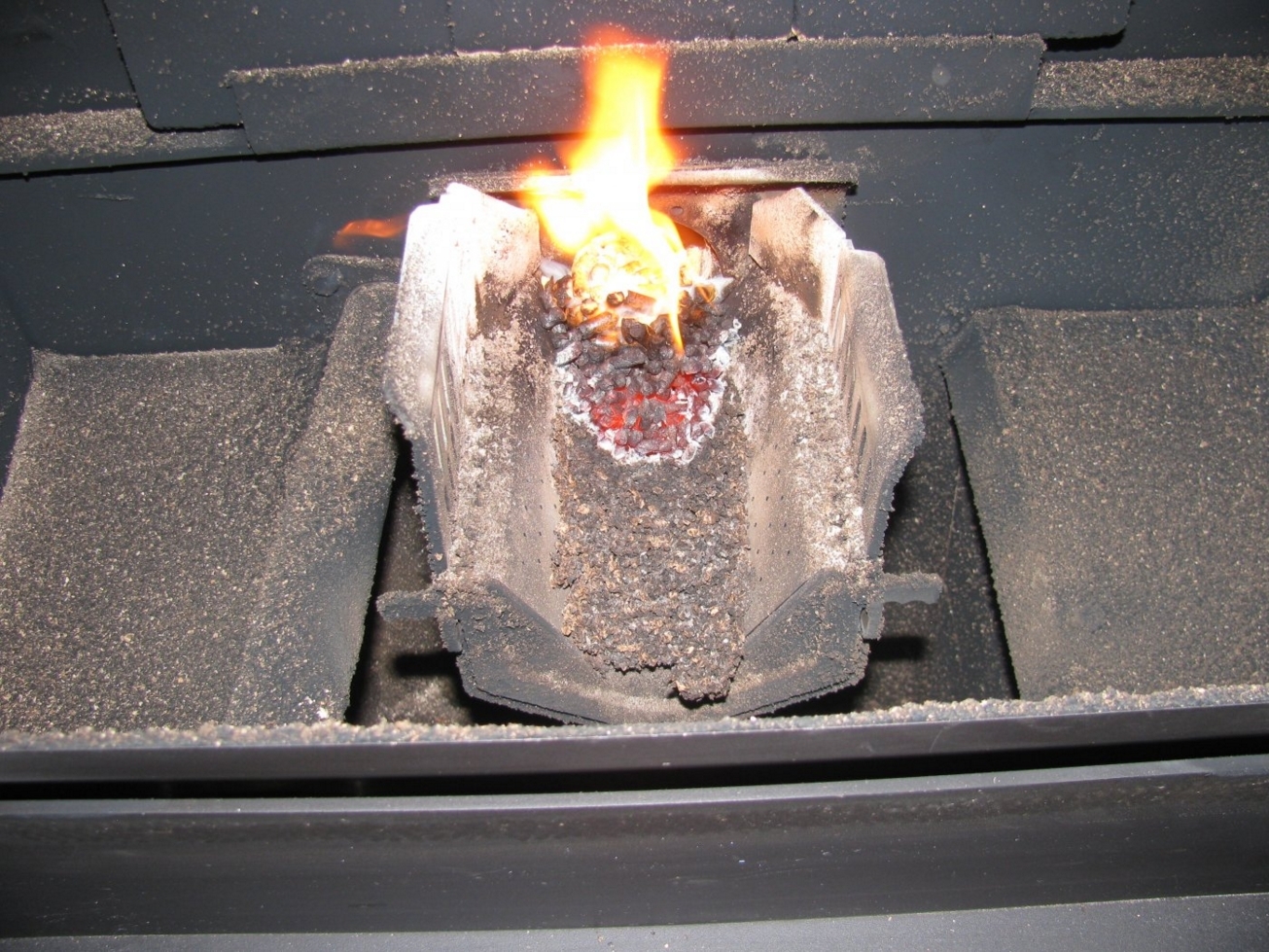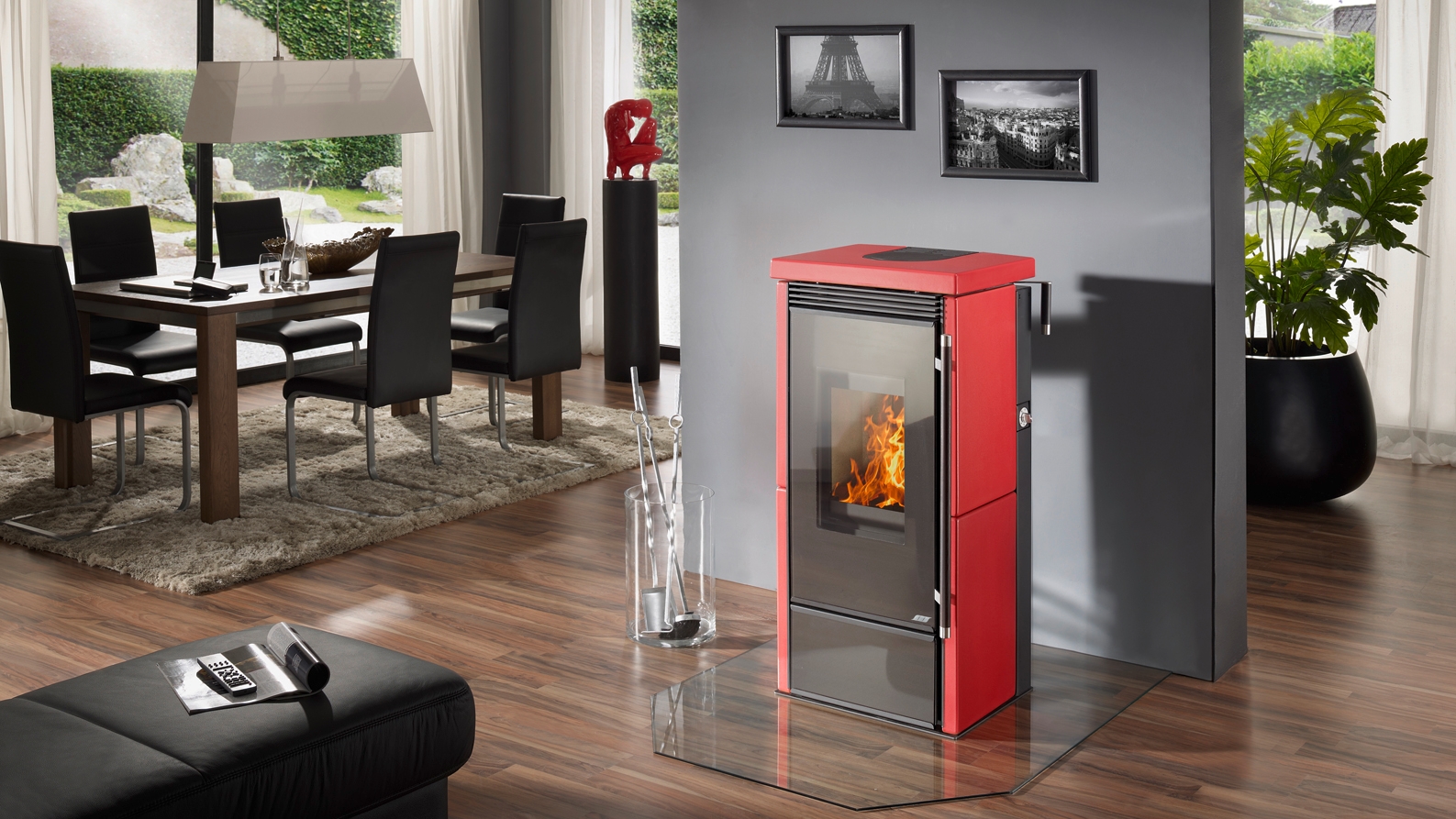Nowadays, pellet stoves heating in Germany is a widespread phenomenon. A lot of houses and households are obliged to provide heating from the renewable sources of energy as the laws of Germany demand increased biomass usage among the citizens of the country. Hence, a lot of living places in Germany are equipped with pellet stoves installations. Due to the combustion technologies, some amounts of ash are left in pellet stoves combustion areas. German biofuel portal biomassa.de studies the most appropriate experiences of wood pellet wastes utilization.
As far as pellet stoves usage is concerned, the history of wood stoves usage in Germany stems from long ago. The country is very rich in wood areas and that is why the tradition of burning wood for heating purposes is not new in Germany. More than that, this tradition continues to exist nowadays. Germany as an ecologically friendly country does everything possible to maintain healthy climatic conditions both in the country and in Europe. To succeed in solving the problem of climate change, Germany makes significant contributions to the solution of the problem by adopting the green laws, which promote an increased usage of energy from renewable sources. In particular, the government of the country subsidizes those members of society who are eager to give up fossil fuel energy consumption and become active users of pellet operating boilers and pellet stoves.

With the lapse of time, wood burning technologies have experienced evolution and the market of regular stoves was replaced by the market of wood pellet stoves. Large forest areas and a powerful wood processing industry in the country lead to the increase of raw material amounts required for wood pellet production, thus, the country possesses a large potential of wood pellet heating.
As follows from "Pellet stoves in Germany 2016: barriers and opportunities" http://biomassa.de/news-pellet-stoves-in-germany-2016-barriers-and-opport-32.html, Germany is the country where the contemporary model of wood pellet stove was first introduced and put to use. For the time being, Germany is one of the largest and highly regarded manufacturers of pellet stove items. Thus, pellet stoves at present dominate at the German market and offer a broad range of stove models.
Wood pellets are compressed wood particles and are used as a fuel for wood pellet stoves. The fuel is very effective as wood pellets contain a very small amount of moisture and that is why they produce more heating energy than that in traditional stoves which operate on wood. High efficiency of wood pellet stoves is mostly determined by the installations' capability of capturing almost 95 per cent of the heat produced from wood pellets burning. Furthermore, pellet stoves operate on wood pellet fuel, which is carbon neutral in terms of its greenhouse gas emissions: all carbon dioxide released into the atmosphere during the wood burning processes was captured from the atmosphere in the process of tree growing. Moreover, wood pellet stoves produce less expensive energy as compared to fossil fuel appliances.
The rapidly growing number of pellet heating installations in Germany - from several hundred appliances in 1998 to nearly 280,000 pellet stoves and boilers at the end of 2012 - illustrates an increased interest of the German citizens in this environmentally-friendly heating systems. Although pellet boilers represent the larger part of pellet applications market share and most of them are installed together with storage facilities, pellet stoves are also gaining their significance at the market of Germany nowadays.
Due to the combustion technologies of German pellet stoves, after the process of heat production some amounts of ashes are left. As the result of combustion, which proceeds in pellet stoves, a small amount of fly ash is produced. This is reflected on the surface of the heat exchanger. That is why pellet stoves demand regular cleaning in the process of their exploitation. The consistent and timely cleaning of the heat exchanger surfaces is essential for high efficiency rates of pellet stoves. There are three available options for comfortable and appropriate cleaning - an automatic cleaning; manual cleaning through regular use of a lever; manual cleaning by handbrush.
Most of German pellet stoves are equipped with automatic cleaning systems, which is the most appropriate choice for ash utilization.
Сurrently, the contents of ash in wood pellets for pellet stoves are very low. Pellet fuel being an optimal combustion feedstock has ash content of less than 1%. According to the statistics, the amount of pellet ash produced in each family house is approximately less than 20 kilogram per year. The amount of leftover wastes also depends on the intensiveness of pellet stove usage.
The majority of German pellet stove models provide an automatic ash removal function. As a rule, appliances are featured with special technical devices which are responsible for the compression of ash in the ash container. The device allows to empty ash container in several months intervals. Depending on the size, the ash drawer must be emptied at intervals from one week up to several weeks. Some models of wood pellet stoves are equipped so that the ash is also discharged via a screw from the heater in an adjacent moveable ash container. In the process of pellet stove de-ashing, it must be ensured that the bottom ash and flying ash are removed from the heat exchanger through the ash drawer. The amendment of the German regulation which concerns the usage of ashes from the incineration of uncontaminated wood recognized them as a fertilizer in the country. This results in the possibility of using pellet ash as a fertilizer in gardening. In addition, the wastes can be disposed as household waste.

The most sustainable and ecologically friendly way to deal with ashes produced from biomass is to minimize ash content in the fuel. The technologies which promote sustainable forestry demand for the minimizing of the amount of nutrients during the harvesting of trees are under the process of development. German Biofuel Portal finds it appropriate to set the necessary legislations, which will be able to provide the recycling control of pellet stoves biomass ashes.
These steps are required to provide the returning of wood pellet ashes to the locations where the biomass was harvested. That will assist in bringing back the nutrients in the original soil and hence help to provide the sustainable growth of feedstock. Furthermore, the recycling approach allows to avoid the problem of soil depletion and exhaustion.
So, the optimal approach is biomass ash recycling. However, the quality of the ash must be taken into consideration and it should be high enough to prevent contamination caused by spreading of the ashes. Most European countries including Germany implemented legislative changes which make the authorities control the recycling of biomass ashes for forests and agriculture. These laws mostly concern industrial biomass ashes utilization. It will be more desirable when the laws also define a more coherent and smart utilization of pellet stoves ashes as this kind of installations is gaining popularity in household in Europe.
Apart from the abovementioned applications, pellet stoves combustion waste can be put to use in gardening. For the time being, ashes from wood pellet stoves are broadly used as a free garden amendment-in this regard they compete with more regular garden amendments such as coffee grounds, peelings from potato and some other vegetables, crushed eggshells etc. However, there is a substantial difference between wood stove ash and all other amendments used in gardening. Besides the fact that pellet stoves combustion waste contains a particular set of elements and nutrients (it is especially rich in potassium) which are favourable for soil, it can also help to correct and improve acidic soil. More than that, wood stove ashes are applied in order to control the amount of pests as well as compost supplement. It should be taken into account that ashes must be only from non-treated wood and one should use special protective clothing and eye-protecting accessories while working with wood stove ashes. Besides, before handling the caustic material and using it for gardening purposes, one should completely cool the ashes.

It is clear that pellet stoves combustion waste is quite instrumental as a kind of fertilizer. It contains special trace elements such as potassium, calcium and magnesium, which contribute significantly to the fertility of soil. It is also worth mentioning that some tips on how to apply wood stove ashes for fertilizing purposes. First of all, ashes should not be used unless a special soil test has been carried out defining the pH level of the soil. Thus, due to the fact that wood stove ash raises the level of pH, it is not recommended that ashes be used if the soil is already alkaline. Secondly, it is rather inappropriate to apply ashes in creating beds for such flowers as rhododendrons, azaleas and some other plants for which a lower pH level is more preferable. In order to improve garden beds with law amount of potassium, two pounds of stove wood ash per 100 square feet should be used. For garden beds with moderate quantity of potassium, the amount of ash should be approximately one pound. If the bed contains an adequate amount of potassium, it is best to add around 0.5 pound of wood stove ash. In order to fertilize a lawn for a year, the most appropriate amount of wood stove ash is twenty pounds per 1,000 square feet of a garden.
In regard to the correction of acidic soil, wood stove ashes as a garden amendment are much more convenient means than e.g. the traditionally used ground limestone, bearing in mind that it is an absolutely costless resource. However, one should pay attention to the type of wood used as well as the size of ash particles as it influences the precise effect of wood stove ash on the pH level of soil. Thus, standard packaged limestone can be applied with more accuracy than wood ashes. By and large, the optimal amount of wood stove ash which should be used for soil correction is approximately 25 pounds per 1,000 square feet of lawn or garden.
The usage of wood stove ashes for the purpose of controlling the level of pest is by no means a new tendency. For that, ash has long been used both in dry and liquid form. As a deterrent for devastating leaf-eating pests (e.g. cucumber beetle), one cup of hydrated lime and one cup of wood stove ashes are mixed together with two gallons of water. This liquid mixture is afterwards spread on the top and bottom parts of the infected plant. In order to deter crawling pests, it is advisable to put a ring of dry wood ashes around infested or vulnerable plants. Wood stove ash is helpful against slugs, snails, cutworms, vine borers etc. Whether ashes are applied in dry or liquid form, it has a rather powdery nature, thus, it does not usually last for long. After rain or strong winds, it is recommended to add more stove wood ash.

One more application of wood stove ashes in gardening and fertilizing is that it is used as a neutralizing ingredient in piles of compost. Ash is extremely helpful in countering dry materials rich in carbon such as e.g. pine needles, sawdust, oak leaves, which are highly acidic. Furthermore, ashes by themselves have influence on the amount of carbon in the compost pile, thus, they can be placed in thin layers between e.g. grass clippings and vegetable scraps, which are rich in nitrogen. Wood stove ashes also have the ability to neutralize odors, which is important as far as compost materials are concerned, as some of them have a rather unpleasant smell. While using wood stove ash as a compost supplement, it is important to make sure that the layers of ash are actually thin-too much ash can result in compost being too alkaline and the content of nitrogen being low.
Thus, the most rational ways of wood pellet combustion waste utilization are as follows: gardening fertilizer or nutrients recycling product. Due to the low ash amount, it is not obligatory to provide coherent recycling procedures of wood pellet ashes. All in all, the best choice is wood pellet ash usage as a fertilizer. The combustion chamber of the pellet stove should always be free of ash residues. An overfilled ashtray leads to disturbances in the operation of the pellet stove. Therefore, one should empty the ash container every one or two weeks. The ash can be used in the garden as compost or fertilizer, or simply disposed of with household waste.
To ensure trouble-free and low-emission combustion of pellets, one should provide the regular cleaning of the combustion chamber and pellet burner. This should be done in a period of four to six weeks. The cleaning of the combustion chamber can be very well performed with a vacuum cleaner. However, disposing of the ashes for gardening is considered controversial by some experts. That can be explained by contains of burning pollutants in ashes such as heavy metals. So, it is desirable to provide waste ash expertize or consult a competent office in your municipality.
Author: Karl Brunner